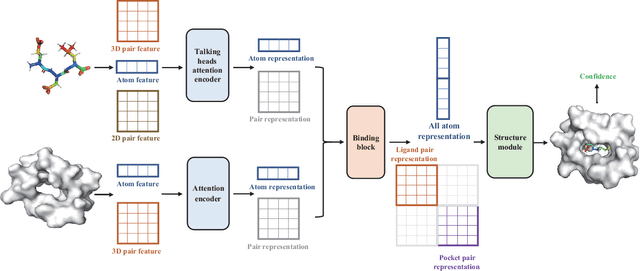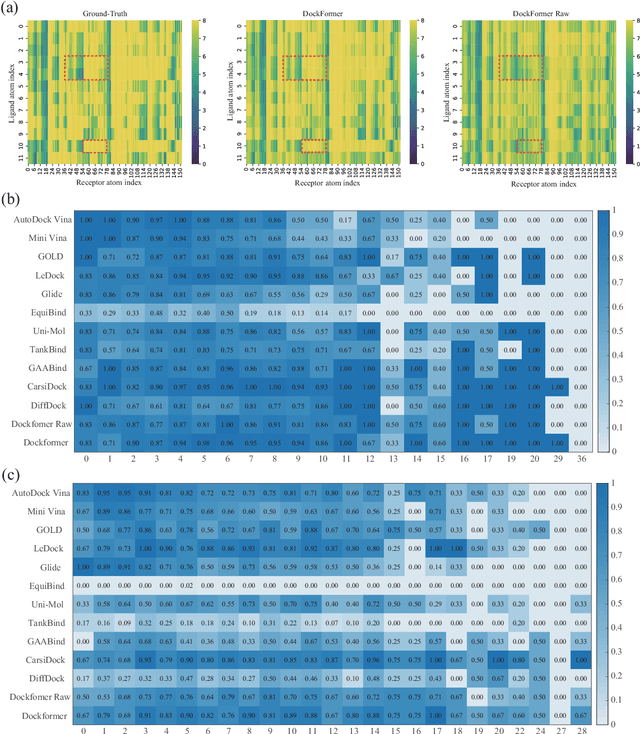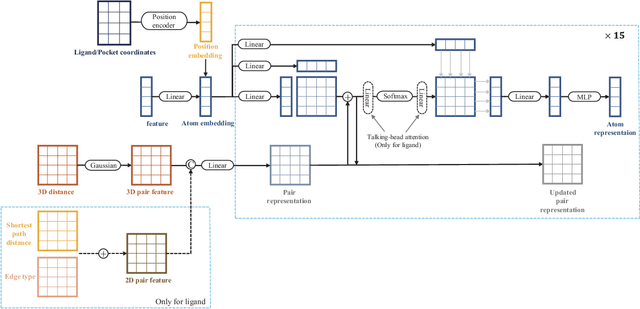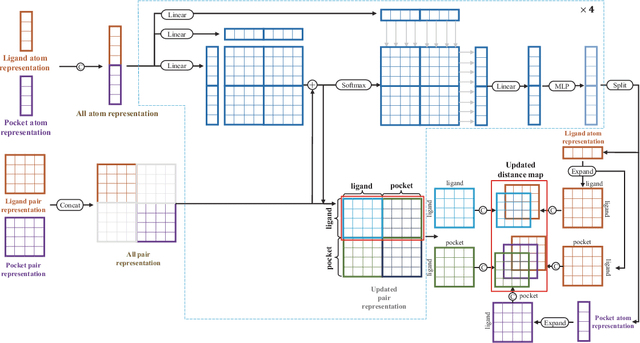Jianqiang Li
Automating Conflict-Aware ACL Configurations with Natural Language Intents
Aug 25, 2025Abstract:ACL configuration is essential for managing network flow reachability, yet its complexity grows significantly with topologies and pre-existing rules. To carry out ACL configuration, the operator needs to (1) understand the new configuration policies or intents and translate them into concrete ACL rules, (2) check and resolve any conflicts between the new and existing rules, and (3) deploy them across the network. Existing systems rely heavily on manual efforts for these tasks, especially for the first two, which are tedious, error-prone, and impractical to scale. We propose Xumi to tackle this problem. Leveraging LLMs with domain knowledge of the target network, Xumi automatically and accurately translates the natural language intents into complete ACL rules to reduce operators' manual efforts. Xumi then detects all potential conflicts between new and existing rules and generates resolved intents for deployment with operators' guidance, and finally identifies the best deployment plan that minimizes the rule additions while satisfying all intents. Evaluation shows that Xumi accelerates the entire configuration pipeline by over 10x compared to current practices, addresses O(100) conflicting ACLs and reduces rule additions by ~40% in modern cloud network.
BiggerGait: Unlocking Gait Recognition with Layer-wise Representations from Large Vision Models
May 23, 2025Abstract:Large vision models (LVM) based gait recognition has achieved impressive performance. However, existing LVM-based approaches may overemphasize gait priors while neglecting the intrinsic value of LVM itself, particularly the rich, distinct representations across its multi-layers. To adequately unlock LVM's potential, this work investigates the impact of layer-wise representations on downstream recognition tasks. Our analysis reveals that LVM's intermediate layers offer complementary properties across tasks, integrating them yields an impressive improvement even without rich well-designed gait priors. Building on this insight, we propose a simple and universal baseline for LVM-based gait recognition, termed BiggerGait. Comprehensive evaluations on CCPG, CAISA-B*, SUSTech1K, and CCGR\_MINI validate the superiority of BiggerGait across both within- and cross-domain tasks, establishing it as a simple yet practical baseline for gait representation learning. All the models and code will be publicly available.
ADNP-15: An Open-Source Histopathological Dataset for Neuritic Plaque Segmentation in Human Brain Whole Slide Images with Frequency Domain Image Enhancement for Stain Normalization
May 08, 2025Abstract:Alzheimer's Disease (AD) is a neurodegenerative disorder characterized by amyloid-beta plaques and tau neurofibrillary tangles, which serve as key histopathological features. The identification and segmentation of these lesions are crucial for understanding AD progression but remain challenging due to the lack of large-scale annotated datasets and the impact of staining variations on automated image analysis. Deep learning has emerged as a powerful tool for pathology image segmentation; however, model performance is significantly influenced by variations in staining characteristics, necessitating effective stain normalization and enhancement techniques. In this study, we address these challenges by introducing an open-source dataset (ADNP-15) of neuritic plaques (i.e., amyloid deposits combined with a crown of dystrophic tau-positive neurites) in human brain whole slide images. We establish a comprehensive benchmark by evaluating five widely adopted deep learning models across four stain normalization techniques, providing deeper insights into their influence on neuritic plaque segmentation. Additionally, we propose a novel image enhancement method that improves segmentation accuracy, particularly in complex tissue structures, by enhancing structural details and mitigating staining inconsistencies. Our experimental results demonstrate that this enhancement strategy significantly boosts model generalization and segmentation accuracy. All datasets and code are open-source, ensuring transparency and reproducibility while enabling further advancements in the field.
Automated Hybrid Reward Scheduling via Large Language Models for Robotic Skill Learning
May 05, 2025Abstract:Enabling a high-degree-of-freedom robot to learn specific skills is a challenging task due to the complexity of robotic dynamics. Reinforcement learning (RL) has emerged as a promising solution; however, addressing such problems requires the design of multiple reward functions to account for various constraints in robotic motion. Existing approaches typically sum all reward components indiscriminately to optimize the RL value function and policy. We argue that this uniform inclusion of all reward components in policy optimization is inefficient and limits the robot's learning performance. To address this, we propose an Automated Hybrid Reward Scheduling (AHRS) framework based on Large Language Models (LLMs). This paradigm dynamically adjusts the learning intensity of each reward component throughout the policy optimization process, enabling robots to acquire skills in a gradual and structured manner. Specifically, we design a multi-branch value network, where each branch corresponds to a distinct reward component. During policy optimization, each branch is assigned a weight that reflects its importance, and these weights are automatically computed based on rules designed by LLMs. The LLM generates a rule set in advance, derived from the task description, and during training, it selects a weight calculation rule from the library based on language prompts that evaluate the performance of each branch. Experimental results demonstrate that the AHRS method achieves an average 6.48% performance improvement across multiple high-degree-of-freedom robotic tasks.
Performance Estimation for Supervised Medical Image Segmentation Models on Unlabeled Data Using UniverSeg
Apr 22, 2025Abstract:The performance of medical image segmentation models is usually evaluated using metrics like the Dice score and Hausdorff distance, which compare predicted masks to ground truth annotations. However, when applying the model to unseen data, such as in clinical settings, it is often impractical to annotate all the data, making the model's performance uncertain. To address this challenge, we propose the Segmentation Performance Evaluator (SPE), a framework for estimating segmentation models' performance on unlabeled data. This framework is adaptable to various evaluation metrics and model architectures. Experiments on six publicly available datasets across six evaluation metrics including pixel-based metrics such as Dice score and distance-based metrics like HD95, demonstrated the versatility and effectiveness of our approach, achieving a high correlation (0.956$\pm$0.046) and low MAE (0.025$\pm$0.019) compare with real Dice score on the independent test set. These results highlight its ability to reliably estimate model performance without requiring annotations. The SPE framework integrates seamlessly into any model training process without adding training overhead, enabling performance estimation and facilitating the real-world application of medical image segmentation algorithms. The source code is publicly available
Comparative Analysis of Pre-trained Deep Learning Models and DINOv2 for Cushing's Syndrome Diagnosis in Facial Analysis
Jan 21, 2025



Abstract:Cushing's syndrome is a condition caused by excessive glucocorticoid secretion from the adrenal cortex, often manifesting with moon facies and plethora, making facial data crucial for diagnosis. Previous studies have used pre-trained convolutional neural networks (CNNs) for diagnosing Cushing's syndrome using frontal facial images. However, CNNs are better at capturing local features, while Cushing's syndrome often presents with global facial features. Transformer-based models like ViT and SWIN, which utilize self-attention mechanisms, can better capture long-range dependencies and global features. Recently, DINOv2, a foundation model based on visual Transformers, has gained interest. This study compares the performance of various pre-trained models, including CNNs, Transformer-based models, and DINOv2, in diagnosing Cushing's syndrome. We also analyze gender bias and the impact of freezing mechanisms on DINOv2. Our results show that Transformer-based models and DINOv2 outperformed CNNs, with ViT achieving the highest F1 score of 85.74%. Both the pre-trained model and DINOv2 had higher accuracy for female samples. DINOv2 also showed improved performance when freezing parameters. In conclusion, Transformer-based models and DINOv2 are effective for Cushing's syndrome classification.
Deep Learning-Based Feature Fusion for Emotion Analysis and Suicide Risk Differentiation in Chinese Psychological Support Hotlines
Jan 15, 2025



Abstract:Mental health is a critical global public health issue, and psychological support hotlines play a pivotal role in providing mental health assistance and identifying suicide risks at an early stage. However, the emotional expressions conveyed during these calls remain underexplored in current research. This study introduces a method that combines pitch acoustic features with deep learning-based features to analyze and understand emotions expressed during hotline interactions. Using data from China's largest psychological support hotline, our method achieved an F1-score of 79.13% for negative binary emotion classification.Additionally, the proposed approach was validated on an open dataset for multi-class emotion classification,where it demonstrated better performance compared to the state-of-the-art methods. To explore its clinical relevance, we applied the model to analysis the frequency of negative emotions and the rate of emotional change in the conversation, comparing 46 subjects with suicidal behavior to those without. While the suicidal group exhibited more frequent emotional changes than the non-suicidal group, the difference was not statistically significant.Importantly, our findings suggest that emotional fluctuation intensity and frequency could serve as novel features for psychological assessment scales and suicide risk prediction.The proposed method provides valuable insights into emotional dynamics and has the potential to advance early intervention and improve suicide prevention strategies through integration with clinical tools and assessments The source code is publicly available at https://github.com/Sco-field/Speechemotionrecognition/tree/main.
Efficient Language-instructed Skill Acquisition via Reward-Policy Co-Evolution
Dec 18, 2024



Abstract:The ability to autonomously explore and resolve tasks with minimal human guidance is crucial for the self-development of embodied intelligence. Although reinforcement learning methods can largely ease human effort, it's challenging to design reward functions for real-world tasks, especially for high-dimensional robotic control, due to complex relationships among joints and tasks. Recent advancements large language models (LLMs) enable automatic reward function design. However, approaches evaluate reward functions by re-training policies from scratch placing an undue burden on the reward function, expecting it to be effective throughout the whole policy improvement process. We argue for a more practical strategy in robotic autonomy, focusing on refining existing policies with policy-dependent reward functions rather than a universal one. To this end, we propose a novel reward-policy co-evolution framework where the reward function and the learned policy benefit from each other's progressive on-the-fly improvements, resulting in more efficient and higher-performing skill acquisition. Specifically, the reward evolution process translates the robot's previous best reward function, descriptions of tasks and environment into text inputs. These inputs are used to query LLMs to generate a dynamic amount of reward function candidates, ensuring continuous improvement at each round of evolution. For policy evolution, our method generates new policy populations by hybridizing historically optimal and random policies. Through an improved Bayesian optimization, our approach efficiently and robustly identifies the most capable and plastic reward-policy combination, which then proceeds to the next round of co-evolution. Despite using less data, our approach demonstrates an average normalized improvement of 95.3% across various high-dimensional robotic skill learning tasks.
Video2Reward: Generating Reward Function from Videos for Legged Robot Behavior Learning
Dec 07, 2024Abstract:Learning behavior in legged robots presents a significant challenge due to its inherent instability and complex constraints. Recent research has proposed the use of a large language model (LLM) to generate reward functions in reinforcement learning, thereby replacing the need for manually designed rewards by experts. However, this approach, which relies on textual descriptions to define learning objectives, fails to achieve controllable and precise behavior learning with clear directionality. In this paper, we introduce a new video2reward method, which directly generates reward functions from videos depicting the behaviors to be mimicked and learned. Specifically, we first process videos containing the target behaviors, converting the motion information of individuals in the videos into keypoint trajectories represented as coordinates through a video2text transforming module. These trajectories are then fed into an LLM to generate the reward function, which in turn is used to train the policy. To enhance the quality of the reward function, we develop a video-assisted iterative reward refinement scheme that visually assesses the learned behaviors and provides textual feedback to the LLM. This feedback guides the LLM to continually refine the reward function, ultimately facilitating more efficient behavior learning. Experimental results on tasks involving bipedal and quadrupedal robot motion control demonstrate that our method surpasses the performance of state-of-the-art LLM-based reward generation methods by over 37.6% in terms of human normalized score. More importantly, by switching video inputs, we find our method can rapidly learn diverse motion behaviors such as walking and running.
* 8 pages, 6 figures, ECAI2024
Dockformer: A transformer-based molecular docking paradigm for large-scale virtual screening
Nov 15, 2024



Abstract:Molecular docking enables virtual screening of compound libraries to identify potential ligands that target proteins of interest, a crucial step in drug development; however, as the size of the compound library increases, the computational complexity of traditional docking models increases. Deep learning algorithms can provide data-driven research and development models to increase the speed of the docking process. Unfortunately, few models can achieve superior screening performance compared to that of traditional models. Therefore, a novel deep learning-based docking approach named Dockformer is introduced in this study. Dockformer leverages multimodal information to capture the geometric topology and structural knowledge of molecules and can directly generate binding conformations with the corresponding confidence measures in an end-to-end manner. The experimental results show that Dockformer achieves success rates of 90.53\% and 82.71\% on the PDBbind core set and PoseBusters benchmarks, respectively, and more than a 100-fold increase in the inference process speed, outperforming almost all state-of-the-art docking methods. In addition, the ability of Dockformer to identify the main protease inhibitors of coronaviruses is demonstrated in a real-world virtual screening scenario. Considering its high docking accuracy and screening efficiency, Dockformer can be regarded as a powerful and robust tool in the field of drug design.
 Add to Chrome
Add to Chrome Add to Firefox
Add to Firefox Add to Edge
Add to Edge